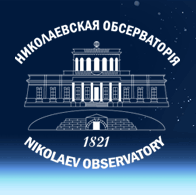| Legal Base |
|
2011-03-03 17:18:56
Research Institute "Mykolaiv Astronomical Observatory" (RI "MAO") is based on state ownership, and is subordinated to the Ministry of Education and Science. RI "MAO" is the non profitable research institute. The RI "MAO" is a legal body having certificate of state registration, series A01 #492800, issued on July 8, 2002. The legal form is a state institution. Type of classification of economic activities is 72.19. Research and development in the sphere of natural and technical sciences. Reference AA #662402 of the Unified State Register of Enterprises and Organizations of Ukraine. The RI "MAO" operates on the basis of the Law of Ukraine "About scientific and scientific-technical activity", the current regulation of Ukraine and the Constitution. The Charter of the RI "MAO" was registered by the Executive Committee of Nikolaev City Council on June 22, 2011 #15221050003010688. The purpose and object of research activity are defined in accordance with the article 3 of the Charter. The RI "MAO" is created for:
The main activities of the RI "MAO" are:
|

Íàóêîâî-äîñë³äíèé ³íñòèòóò
Ìèêîëà¿âñüêà àñòðîíîì³÷íà îáñåðâàòîð³ÿ
̳í³ñòåðñòâî îñâ³òè ³ íàóêè
Ìèêîëà¿âñüêà àñòðîíîì³÷íà îáñåðâàòîð³ÿ
̳í³ñòåðñòâî îñâ³òè ³ íàóêè

 |
 |
 |